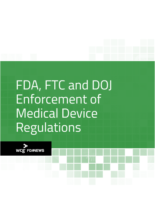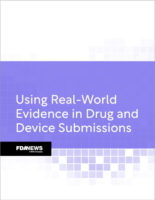
Home » FDA Provides New Guidelines for Cleaning Duodenoscopes
FDA Provides New Guidelines for Cleaning Duodenoscopes
Following the outbreak of infections related to a deadly superbug, the FDA has provided new guidelines to help healthcare facilities ensure their duodenoscopes are cleaned adequately.
Duodenoscopes gained intense media scrutiny after reports of antibiotic-resistant infections in Chicago, Pittsburgh, Seattle and Los Angeles. Earlier this year, the FDA revealed that between January 2013 and December 2014, it had received 75 reports involving about 135 patients suffering from carbapenem-resistant Enterobacteriaceae transmissions linked to these devices.
The FDA acknowledges that the duodenoscope’s unique design is useful for performing endoscopic retrograde cholangiopancreatography procedures. This utility has its drawbacks, however, as the device has small working parts, including a moveable elevator mechanism with tiny crevices. This elevator is particularly difficult to clean and disinfect properly, even if a healthcare professional adheres to a manufacturer’s instructions for use.
“Meticulous adherence to the manufacturer’s reprocessing instructions is labor-intensive and prone to human error,” according to the agency.
To combat the threat of infection transmission, the FDA is recommending facilities adopt the following supplemental measures: microbiological culturing; ethylene oxide sterilization; use of a liquid chemical sterilant processing system; and repeat high-level disinfection.
“We recognize that not all healthcare facilities can implement one or more of these measures, which require specific resources, training, and expertise,” the FDA said. While this may be the case, it is still critical that those professionals in charge of reprocessing the devices have instructions for use at hand and remain proficient in performing all reprocessing steps.
In addition to the supplemental measures, the agency is urging healthcare facilities to adopt the following best practices:
- Meticulously clean the elevator mechanism and recesses surrounding it by hand;
- Implement a comprehensive quality control program for reprocessing duodenoscopes;
- Review reprocessing recommendations from a consensus document from the American Society for Gastrointestinal Endoscopy and the Society for Healthcare Epidemiology of America.
The FDA notes that it is monitoring the situation and evaluating information from the healthcare community, adverse events reports and other sources. It also is partnering with The Joint Commission, the nation’s largest hospital accreditation body, and the Centers for Medicare & Medicaid Services to bolster hospitals’ adherence to duodenoscope cleaning instructions. In addition, the agency says it is working with industry as it modifies and validates instructions for cleaning duodenoscopes.
Whether you need to convince the FDA to accept a predicate device in a simple 510(k) filing, make design changes or implement UDI across a family of high-risk implantable devices, there’s one thing all regulatory professionals need — the most up-to-date, latest FDA regulations available. Get out bestselling Guide to FDA Medical Device Regulations today!
Upcoming Events
-
07May
-
14May
-
30May
